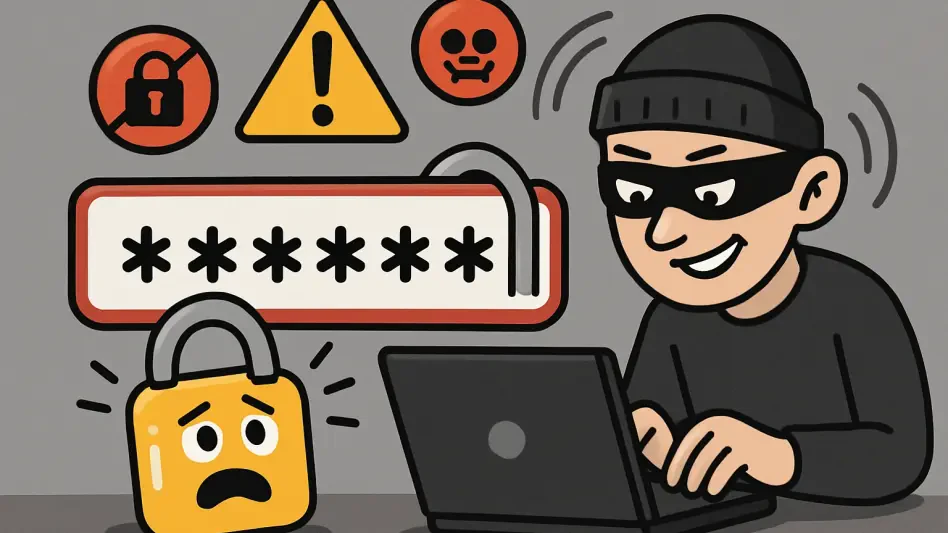Imagine a corporate environment where thousands of employees diligently complete their annual cybersecurity training, believing they are fortified against the ever-looming threat of phishing attacks, only to discover that their efforts might be in vain. A groundbreaking study conducted at a major health institution has cast serious doubt on the effectiveness of mandatory phishing awareness programs, a staple in organizational security protocols. Spanning eight months and involving nearly 20,000 participants, this research delves into whether these widely accepted training sessions genuinely reduce vulnerability to malicious emails. The findings challenge long-held assumptions, revealing that the battle against phishing may require more than just educating employees. This revelation prompts a critical examination of current practices and pushes for innovative solutions in the cybersecurity landscape.
Reevaluating Traditional Training Methods
Uncovering Persistent Vulnerabilities
The research uncovered a stark reality about the impact of standard phishing awareness training on employee behavior. Despite undergoing annual sessions designed to heighten recognition of suspicious emails, the workforce displayed no significant improvement in avoiding phishing traps. Over the course of 10 simulated campaigns, failure rates remained stubbornly high, with only a marginal 1.7% decrease among those who completed the training. Even immediately following the sessions, when retention should theoretically be at its peak, susceptibility to phishing attempts did not notably decline. This persistent vulnerability suggests that the current format of delivering information may fail to resonate with employees, leaving organizations exposed to risks despite their investment in education. The data paints a concerning picture, indicating that simply mandating training is not enough to build a robust defense against increasingly sophisticated cyber threats.
Engagement as a Critical Barrier
Another critical insight from the study centers on the alarming lack of engagement during training sessions. A staggering proportion of employees—over three-quarters—spent less than a minute on online modules, while between 37% and 51% closed the training page almost instantly. This behavior points to a fundamental disconnect, where the training is perceived as an interruption rather than a valuable tool for protection. Such minimal interaction undermines the potential for knowledge retention, rendering the sessions ineffective for a significant portion of the workforce. Employees often divert their attention to other tasks, like browsing the web or checking emails, further diluting the impact of the material presented. This widespread disengagement highlights the need for a radical rethinking of how cybersecurity education is delivered, emphasizing formats that capture attention and encourage active participation over passive consumption.
Exploring Alternative Approaches and Future Directions
Testing Innovative Training Formats
To address the shortcomings of traditional methods, the study experimented with various follow-up training approaches after simulated phishing exercises. Employees were divided into groups receiving different interventions, such as general cybersecurity tips, interactive Q&A modules, detailed briefings on specific attacks, a combination of these, or no additional training as a control. The interactive Q&A format emerged as the most promising, reducing phishing susceptibility by 19% among those fully engaged. However, low completion rates tempered the overall effectiveness, indicating that while innovative methods hold potential, they still struggle to overcome the hurdle of participation. This finding suggests that while alternative formats can yield better results, their success hinges on finding ways to motivate employees to invest time and effort into the learning process, a challenge that remains unresolved in many organizational settings.
Advocating for a Multi-Layered Defense Strategy
Beyond training innovations, the study underscored a broader consensus in the cybersecurity field: relying solely on employee education is insufficient to combat phishing threats. Experts argue for a multi-layered approach that integrates training with advanced automated tools designed to detect and block suspicious messages before they reach users. This perspective shifts the burden away from human vigilance, acknowledging that even well-trained individuals can fall victim to cleverly crafted attacks. The emphasis on technology-supported defenses reflects a growing recognition that phishing is an evolving threat requiring dynamic solutions. By combining educational efforts with robust systems, organizations can create a more resilient security framework. The research advocates for this balanced strategy, urging enterprises to invest in tools that complement human awareness, ensuring protection does not hinge on a single point of failure.
Reflecting on Past Insights for Future Action
Looking back, the detailed evaluation conducted at the health institution offered a sobering critique of mandatory phishing awareness programs, revealing their limited impact on reducing employee susceptibility to cyber threats. High failure rates and disengagement painted a clear picture of the inadequacies in traditional training methods. The exploration of interactive formats provided a glimmer of hope, yet low participation rates tempered optimism. What emerged most powerfully was the call for a comprehensive cybersecurity framework that paired education with technological safeguards. Moving forward, organizations were encouraged to prioritize engagement-driven training while investing in automated defenses to intercept threats. This dual approach promised a more effective shield against phishing, ensuring that past lessons informed stronger, more adaptive strategies for securing sensitive data in an ever-changing digital landscape.








